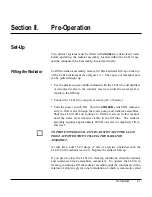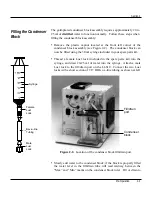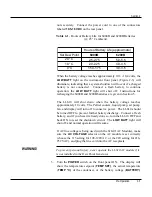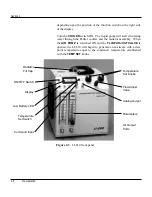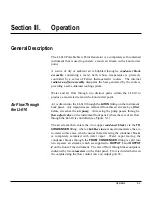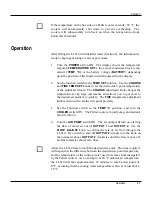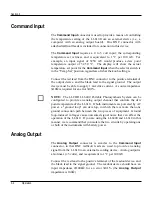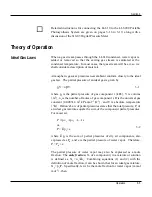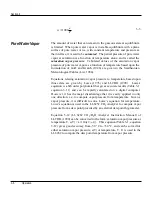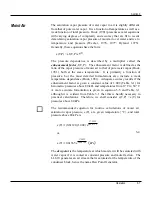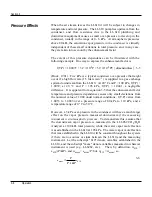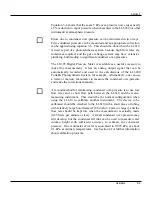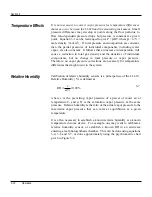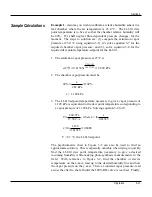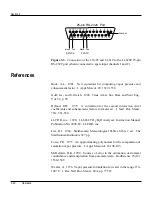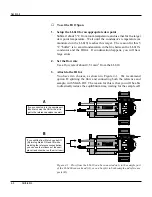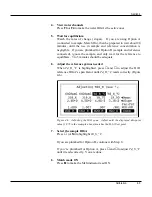
Section 3
3-8
Operation
Pressure Effects
When the air stream leaves the LI-610 it will be subject to changes in
temperature and total pressure. The LI-610 pump lies upstream from the
condenser, and flow resistance due to the LI-610 plumbing and
downstream equipment causes a small over-pressure to develop in the
condenser, usually in the range of 0 - 6 kPa. At atmospheric pressures
above 80 kPa, the saturation vapor pressure in the condenser is virtually
independent of these small variations in total pressure, and, in any case,
they are taken into account by the enhancement factor.
The extent of this pressure dependence can be illustrated with the
following example. One way to express the enhancement factor is
f(T,P) = 1.00072 + 3.2
×
10
-5
P + 5.9
×
10
-9
PT {dimensionless} 3-5
(Buck, 1981). Five kPa is a typical condenser over-pressure that might
occur if a high flow rate (1.5 liters min
-1
) is supplied to a gas exchange
system downstream from the LI-610. At 20 °C and P = 100 kPa, f(T,P) =
1.0039; at 20 °C and P = 105 kPa, f(T,P) = 1.0041, a negligible
difference. It is apparent from equation 3-5 that the enhancement factor
temperature and pressure dependence causes only small deviations from
the nominal value of 1.004 under normal conditions. f(T,P) varies from
1.0033 to 1.0043 over a pressure range of 80 kPa to 110 kPa, and a
temperature range of 0 °C to 50 °C.
However, a 5 kPa over-pressure in the condenser will have a much larger
effect on the vapor pressure measured downstream if the measuring
instrument is at atmospheric pressure. To demonstrate this, assume that
the downstream vapor pressure is measured in the LI-6262 CO
2
/H
2
O
Analyzer at 100 kPa total pressure, while the water vapor mole fraction
was established in the LI-610 at 105 kPa. The water vapor mole fraction
that was established in the LI-610 will be constant throughout the system
if there are no sources or sinks between the LI-610 and the measuring
instrument. Let the subscript "610" denote variables established in the
LI-610, and the subscript "meas" denote variables measured in whatever
instrument is used (e.g. LI-6262, etc.). Then, by definition, w
610
=
e
610
/(P+
∆
P), and w
meas
= e
meas
/P; but, w
610
= w
meas
, so
e
P
P
P
e
meas
610
=
+ ∆
3-6


